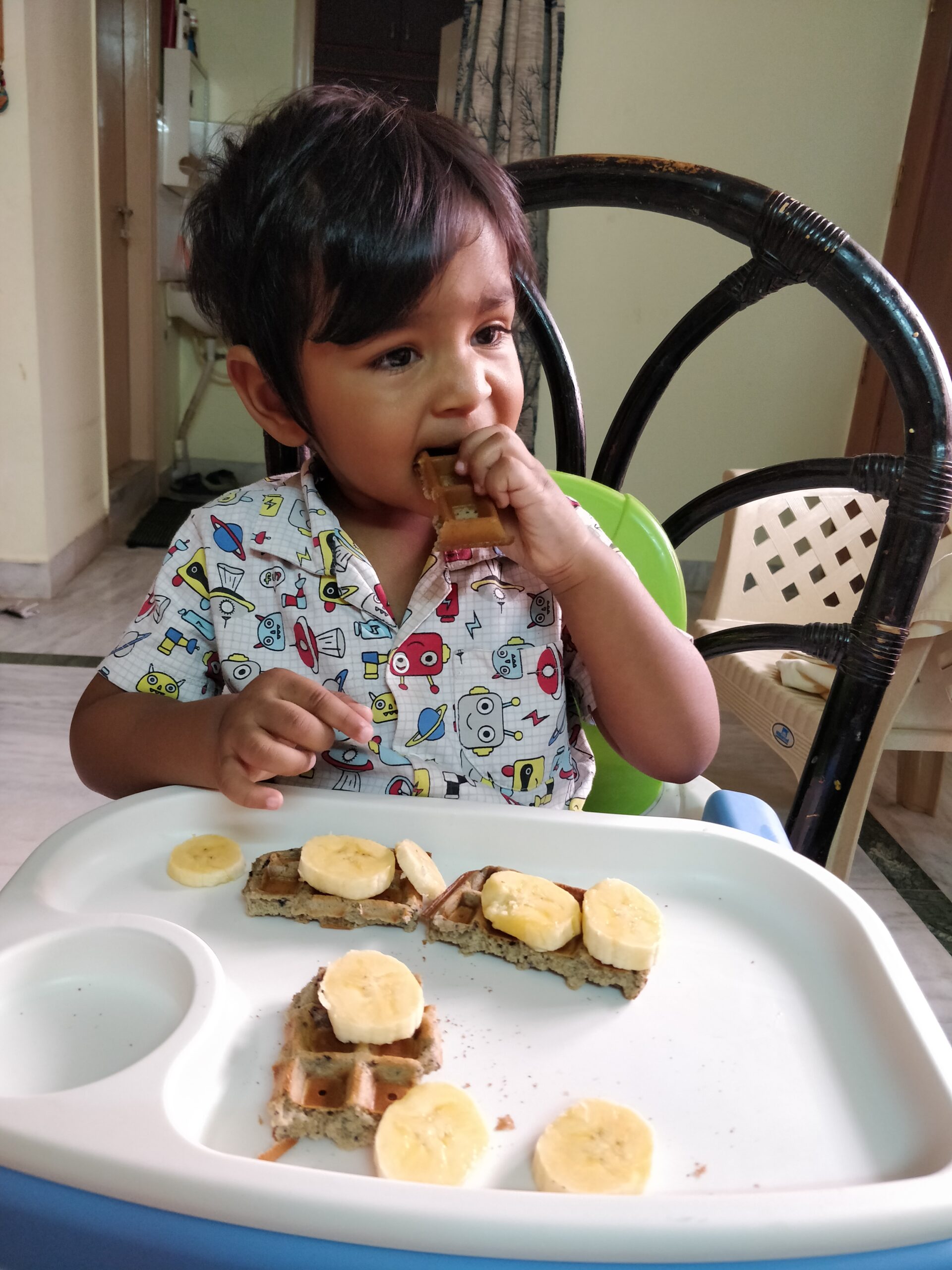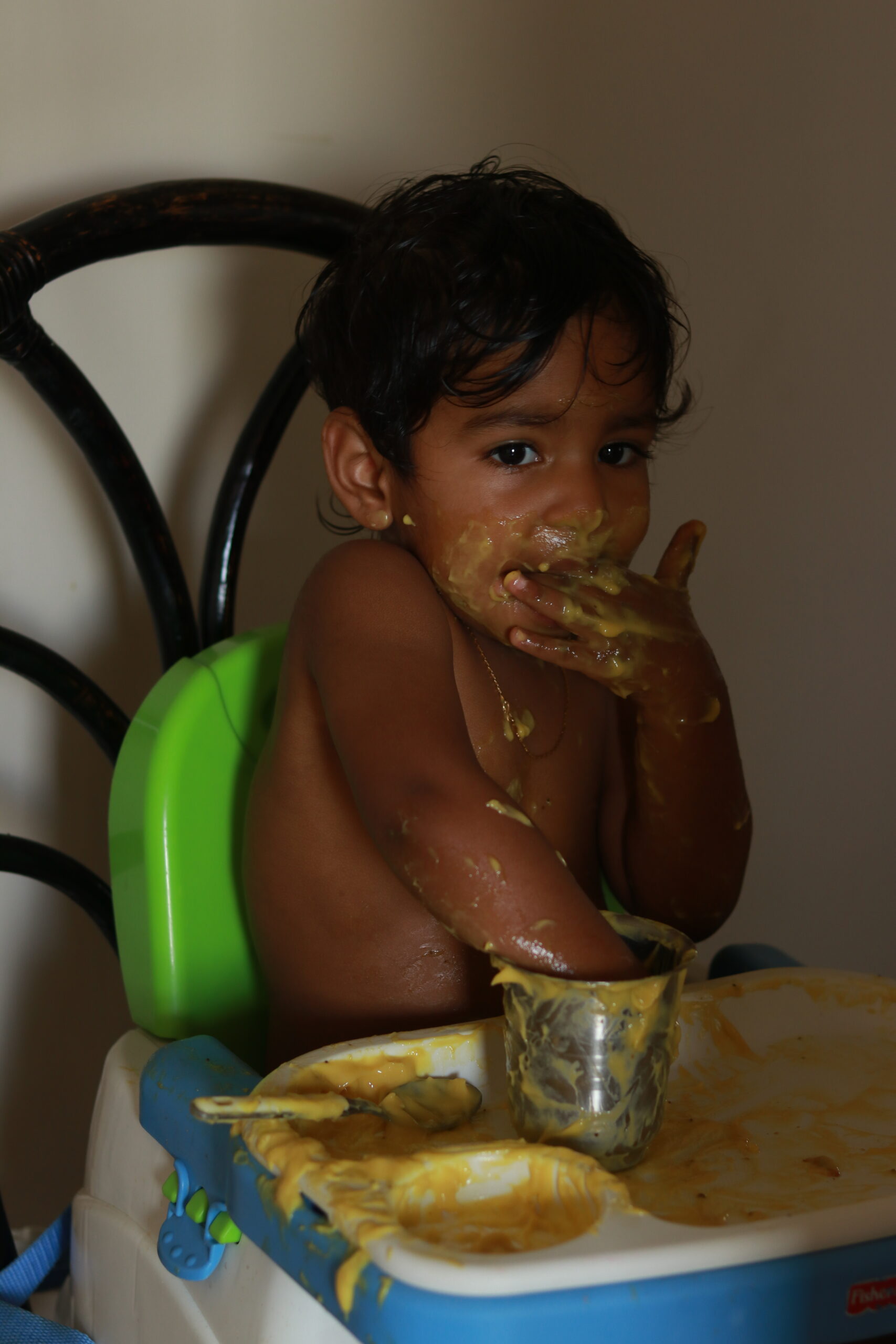
Baby-led weaning 101
Once a baby is at the age of being introduced to solids, there is a lot of advice one gets, too many resources on the internet, too many commercials that tend to put one in a fix! What kind of food to give a baby, when to give, how many times should a baby be fed solids, etc etc are the kind of doubts many new parents have. We also had a lot of these doubts, but thankfully, we attended a session on baby-led weaning and the “eating solids” bit has never been an issue with V. We have been following baby-led weaning with Vishwa from the start. On observing so many people not being well informed when it comes to beginning solids for their babies and after many people asking me to write about this, I finally sat down to pen this!

Giving you, the baby-led weaning 101!
Baby-led weaning is a method of introducing solid food along with breastmilk/formula to the baby’s diet. In simple terms, it is family food self-fed by the baby.
WHY
♥️Firstly, it helps the baby establish a positive relationship with food. The baby knows exactly how much he/she wants, helping them understand what their body needs and to eat accordingly.
♥️Who better a judge than oneself on how much one wants?! The child has very much in tune with his/her own body. A form of liberation, the child feels a sense of ownership over one’s actions.
♥️It is the earliest form of protecting a child’s rights. The baby chooses what, and how much to eat from what is served.
♥️This helps in developing the baby’s oral and motor skills(Montessori moms, take note).
In the long run, on eating with the family, the child develops individuality and learns a lot of things- vocabulary (please pass the rice, serve some gravy) , etiquette, observation skills(dunking the idly in the sambhar/ peeling the dosa to eat), and social interaction(the family chatter, the warmth of eating together). V is just 11 months old but we already observe him point at what he wants, ask (in his own way) when he wants more, shake his head(vigorously that!) when he doesn’t want something, and so on. This gives me faith in the above reason.
♥️Duh, it’s the easiest. Saves the parents a ton of energy!
WHEN

Before introducing solids to your little one, there are three parameters that must be fulfilled, namely:
♥️ 6 months of exclusive breastfeeding/ formula feeding. The infant’s gut cannot process anything other than these for the initial 180 days of life(as recommended by the World Health Organization)
♥️ Can sit in the tripod position for at least a few seconds independently; only when a child can sit straight, the gag reflex is active.
♥️ Has lost the tongue-thrust reflex, so that the baby doesn’t push out the food, helping in effective chewing and swallowing.
WHAT kind of food to offer
♥️Begin with fingered family foods(steamed veggies cut to finger size, dosas cut into strips, omelet, and so on). At 6 months, the baby has a strong palmer grip(can grasp food within the palm, not pick it with fingers). Once the baby develops the pincer grip, introduce food in smaller sizes(better yet, let the baby break into pieces and eat!)
♥️Offer food that the family eats, minus salt and/or sugar till the baby is a year old. Salt and sugar until age 1 can impact the baby’s kidneys negatively.
HOW
♥️After 45 minutes to an hour of having breastfed/ formula fed the baby, place the food in front of the baby, may it be in a high chair/ booster seat/ or just on a plate on the floor. By 6 months, most babies develop the hand to mouth coordination. Let the baby explore, pick up the food and eat it.
♥️At 6 months, one can begin with one meal per day and increase it month by month. Increase every month, for example, 1 meal a day at 6 months, 1 meal+ 1 snack a day or 2 meals a day at 7 months, 2 meals + 1 snack or 3 meals a day at 8 months, and so on.
Some do’s and don’ts
♥️Do Eat with the baby. Let the baby observe you and eat. Don’t crowd around the baby and watch as if he or she is a monkey in the circus!
♥️Do have very less/no expectations at all. The baby’s just learning and exploring, don’t expect the baby to finish up meals from day 1.
♥️Do be ready for the mess. It’s tiring and horrifying, I tell you, but so worth it! Also, messy play is good for the development of cognitive skills, so isn’t that a win?!
♥️Don’t compare, be it with another baby or with the baby himself/herself. Our level of hunger is not always the same, is it.
♥️Don’t force. There are days when the baby just might not want to take solids. Remember till age 1, the main source of nutrition is from breastmilk(or formula).
♥️Don’t distract the child. No tv, no stories, no books. Just sit and eat, and let the child be a part of the family chatter with their babbles!
♥️Do trust the child. The baby knows how much/what he/she wants.
♥️Don’t give up. Sometimes, the baby might not like a particular food. This may change with time. Just keep offering.
♥️Do observe cues. When the child is done, you will know. Once they stop showing interest, start clearing up.

Baby-led weaning is the first step to respecting a child’s choices. Food is to satiate hunger and the child will take it when he/she is ready for it. Some of the main issues that we as parents have is expecting a child to gobble up on the first day, fixing a quantity in mind and worrying when the child doesn’t eat as much, and about the mess a self-fed child makes. Once we let go of that and treat the child as a unique individual, with their own needs and wants, it becomes easier to trust them.
There are a number of resources on the internet that can help you with baby-led weaning, Facebook groups, and so many experts conducting a lot of sessions. If you need help, you can approach one of these mediums. Also, an excellent read would be My child won’t eat.
Dear parents, a baby being introduced to solids should be as normal as picking up a new skill. Don’t fret over it, try to enjoy the journey with your child!
Until next time,
Aishu




